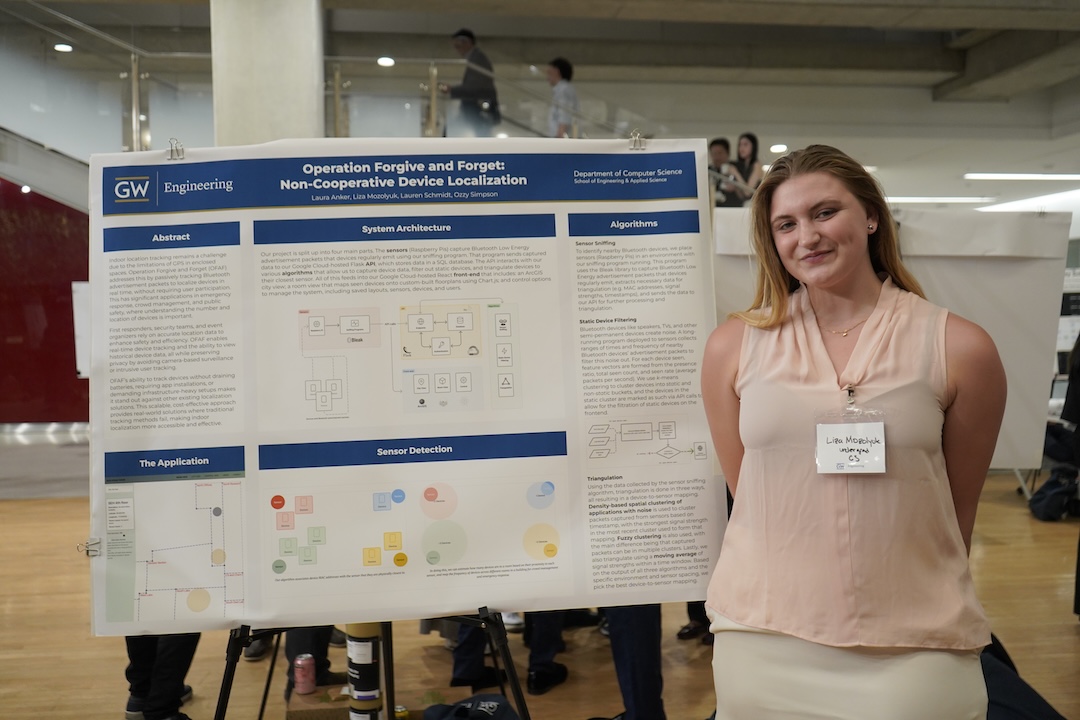Operation Forgive & Forget - Non-Cooperative Device Localization

Project Team
Laura Anker
Liza Mozolyuk
Lauren Schmidt
Ozzy Simpson
Project Mentor
Eli Mattson
Instructors
Dr. Tim Wood, CS, GW Engineering
Xiaodong Qu, CS, GW Engineering
Indoor location tracking remains a challenge, with GPS proving unreliable in enclosed spaces and existing solutions often requiring user participation. Operation Forgive and Forget (OFAF) solves this by leveraging Bluetooth advertisement packets to passively and accurately locate devices in real time. This allows for improved situational awareness in emergency response, crowd management, and other critical applications where traditional tracking methods fall short.
Who experiences the problem?
First responders, event coordinators, and public safety officials all depend on accurate indoor localization. Firefighters need real-time data to locate individuals in burning buildings, while security teams at concerts and stadiums require live crowd insights to prevent dangerous congestion. Additionally, businesses and urban planners can use device movement patterns to optimize layouts and improve operations, all without requiring user participation.
Why is this problem important?
Precise, real-time location tracking can save lives and improve efficiency. In emergencies, knowing where people are located ensures faster, more effective rescues. In public spaces, it enables better crowd control and safety measures. Traditional methods rely on infrastructure-heavy setups or user cooperation, making them impractical in many situations. A non-cooperative, passive localization system like OFAF offers a scalable, cost-effective solution that works in real-world scenarios where existing technologies fail.
What is the coolest thing about your project?
OFAF’s most exciting feature is its ability to detect and track devices without any user setup or consent, purely by monitoring Bluetooth signals. This enables the ability to generate heat maps, historical movement analysis, and emergency tracking without draining device batteries or requiring app installations. Unlike camera-based monitoring, it preserves privacy while still offering valuable insights for rescue operations, event management, and more.
What specific technical problems did you encounter?
One major technical challenge in OFAF is Bluetooth MAC address randomization, which prevents long-term tracking of individual devices. While this limits persistent identification, it is less problematic for our primary focus: real-time localization. Since Bluetooth advertisement packets are broadcast frequently, our system can still capture and process enough data for accurate positioning, even if device identifiers change over time. Another challenge is signal variability, as Bluetooth strength fluctuates due to interference, reflections, and obstructions. To address this, we rely on data clustering and triangulation techniques (like the log-distance path loss model) to improve localization accuracy despite noise.

